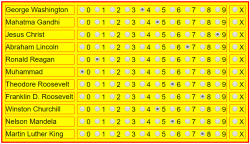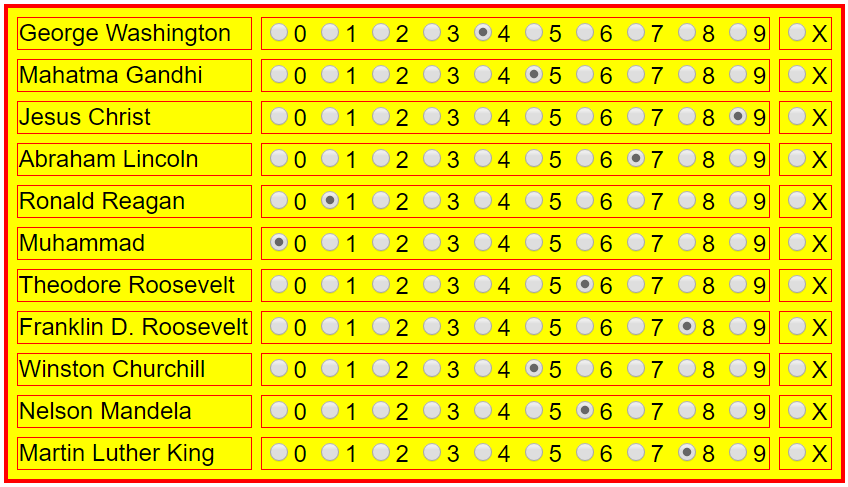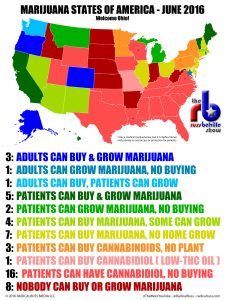
Since I have dropped my #BernieOrBust stand to support Hillary Clinton for president, I’ve has to deal with so many people urging me to vote for the Green’s Jill Stein or the Libertarian’s Gary Johnson. I think Dan Savage has the best take on the quadrennial third party distraction, but I wanted to follow it up with concrete advice for my third-party-loving friends on the Left and the Right.
Stop trying to change the players and start trying to change the game. What binds us to a duopoly is one simple thing: math.
Please visit http://rangevoting.org for the full mathematical explanations. I’ve been hyping this concept for a decade now. I rarely find any of my Green or Libertarian friends hyping it, which is odd, considering it is the only way by which the system can be fixed to allow for third parties.
This is why I have my doubts to the sincerity of the angry quadrennial third-party POTUS voter who I can never recall hitting me up to vote Green or Libertarian for the city councilman, sheriff, district attorney, or state rep running in-between presidential elections.
As Savage points out, elected Greens make up about 0.017% of the estimated 520,000 elected offices in the United States, and none of them are a governor, congressperson, or senator. That’s largely because no matter how great a candidate the Greens or Libertarians run, the math of our pick-only-one voting system works in favor of the entrenched two parties.1

Range voting means that you’re not limited to just one selection for president (or any office), you’re allowed to pick all the people you think would do a good job. There are variations – some methods would have you assign a score of 0 to 9 to each candidate (Ranked Choice), others just let you pick multiple choice, others would have you only pick a first and a second choice (Instant Run-Off).
Regardless of method, in this election, you could vote for both Stein and Clinton. Or vote Johnson and Stein and Clinton. Everybody’s vote totals are added up and the person with the most votes wins. It’s your way of saying, “I prefer Stein/Johnson, but if they don’t get enough votes, I prefer Clinton to Trump.”
The system we have now only allows you to say “I prefer Stein/Johnson, but if they don’t get enough votes, y’all figure it out, I already had my one say.”
Now, some will say that trying to install range voting is as pie-in-the-sky an idea as trying to elect Jill Stein or Gary Johnson. Why would the two parties enriched by the current single vote system work to change that?
The difference is that we have a mechanism outside the the two-party system with which to get range voting. Think marijuana legalization… do you think Democrats or Republicans stepped up to make that happen?

It would have to start at the state level in those states with citizen ballot initiatives. There are 24 such states, but I’d start somewhere with a small, demographically homogeneous population, like Vermont or Utah. Pass an initiative instituting range voting and let ‘er rip. Give it a few cycles of range-voted elections and someday, Vermont has a Green statehouse and governor and Utah has a Libertarian statehouse and governor.
Repeat that cycle in other initiative states. As people have more and more exposure to what range voting is and see the results it produces, more of the disaffected voters and third party voters get on the bandwagon and pass it in their states. Like medical marijuana, it continues to grow and shape the political conversation, and eventually some state legislatures give it a pass, pushed by the increasing number of third party candidates who win local and state elections, since the third party is building financial backing and political clout.
Then, maybe sometime around 2036, you’ve got a significant number of states that have range voting and there becomes a nationwide push to institute it federally. Get that done and perhaps Malia Obama becomes the first Green president or Rand Paul becomes the first Libertarian president.
That’s it. Get Greens & Libertarians (& Socialists & Constitutionalists & Worker’s World & all the rest) to decide to focus all their energies on passing a range voting initiative in their state. That’s something the frackingest Libertarian and the gun-grabbingest Green can work together on. It’s changing the game that they all agree is rigged.
But Russ, that would require communication and collaboration over multiple states and conflicting organizations with differing agendas and take a generation to complete! It’s so much easier for me to get all pissed-off and self-righteous and throw my vote away and claim a clean conscience when Donald Trump is setting an 8-1 conservative Supreme Court for the next generation! Besides, it could never be done!
Really? What I just described was what the Right did in merging Evangelicals, fiscal conservatives, and southern white males into a political force that brought us to this two-headed corporate party problem in the first place.
Let range voting be the next medical marijuana. Get all the third parties, the folks who don’t vote, and even the disillusioned Republicans and Democrats behind it. Don’t hate the players, hate the game, and change it!
1 Yes, the bullshit requirements the Dems & GOP conspire upon to thwart third-party ballot access and debate access are deplorable. Yet another reason why my strategy of going after the game is more important.






